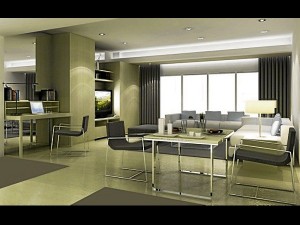Design lessons from the ‘Minister of Magic’

SIMPLE lines, carefully selected material and details that answer directly to specific needs will create successful design solutions. Spaces, like Apple’s gadgets, must not be littered with forms and details that have no bearing on its function and user experience.
Yes, that’s what The Economist magazine called him, and I fully agree. More than a week after Steve Jobs’ passing, the world is still running tributes (this one included!) to the man who has, by far, made the greatest advances to the way digital devices enrich our lives. Steve Jobs may be gone, but the $340 billion, 49,000 employee-strong Apple “industry,” looks forward to a future built on Job’s enviable ability to think “outside the box.” Technology meets artistry in the world of magical devices that Apple creates. We draw some lessons here.
- Design does matter. Some people have bought Mac products simply because they look good. As the world has become more conscious of its aesthetics preferences, design now often takes the center stage. In the built interior environment, nothing is more glaring than a setting that is badly put together. Seen and experienced at a human scale, mediocrity of this type can be truly disturbing because its effect is direct and usually also permanent. Design influences the failure or success of a product. And just as good design can sell a product, so too can it sell a space.
- Address the needs and nothing else. In other words, eliminate unnecessary detail and ornamentation. Apple painstakingly deliberates the necessity or excess of its various parts, purging unnecessary functions and paring it down to its purest functional and aesthetic form. In this purity, there is and elegance that makes the process seem deceivingly effortless. Simple lines, carefully selected material and details that answer directly to specific needs will create successful design solutions. Spaces, like Apple’s gadgets, must not be littered with forms and details that have no bearing on its function and user experience.
- Repeat your elements for a unified look. Apple’s gadgets apply visual rhythm through forms used recurrently on different design features. This principle of repetition can be applied to spaces as well. If a bed’s headboard is quilted in a rectangular grid pattern, then this pattern can be used for wallpaper, or for the shape of the dining table (rectangular!). Use it too for the tiles in a bathroom (yes, there are rectangular ones). Use varying scales or sizes. Notice how most Apple products use circles and squares or rectangles with rounded corners? The end effect is neither dull nor boring as the scale of the repeated elements give it interest, yet the result is unified and easy to the eyes.
- Introduce something unexpected. Design almost always caters to a certain need, but at times, needs not be the source of a creation. Apple’s products (like the iPad) did not cater to a particular demand. Instead, when they were presented, these devices were so fascinatingly engaging that they spurred their own demand and have become “necessities.” Design should fly from the roots of intent and be fused with creatively wild imaginings to be truly innovative. Even with the built environment, it is when we think outside of the box and deliver the unexpected that design becomes delightful.
- Follow the adage of “form follows function.” Apple created its devices in a very deliberate way, showcasing the fusion of form and function. These are best seen in the fine features of its devices—little buttons flushed to the adjoining surface, a screen surface that runs to the slim edge of the case, texts and fonts that don’t disrupt the clean surfaces. The devil is in the details, but God is in them too. While technology allows for advances in functionality, the greater understanding of the human psyche is what makes a design successful. As Steve said during the launch of the iPad2: “Technology alone is not enough. It’s technology married with the liberal arts, married with the humanities that yields the results that makes our hearts sing.”
- Create your magic. A memorable experience is what will set a design apart from the rest. There are some environments that can look mightily impressive when seen in photos, but do not quite have the same impact during actual presence. The memorable places are those where you can sit amid your surroundings and feel a sense of belonging. It’s a combination of the visual aesthetics, the kinesthetic comfort of textures experienced by the eyes and felt by the body, the quality of light and the carefully calibrated hues of a color scheme.
Apple cleverly fashioned its creations to cater to the human experience. Its meticulous approach to the design process simplifies rather than complicates. In all their simplicity, they set the stage for enchantment. They wove magic.
Contact the author through [email protected] or through our Asuncion Berenguer Facebook account.